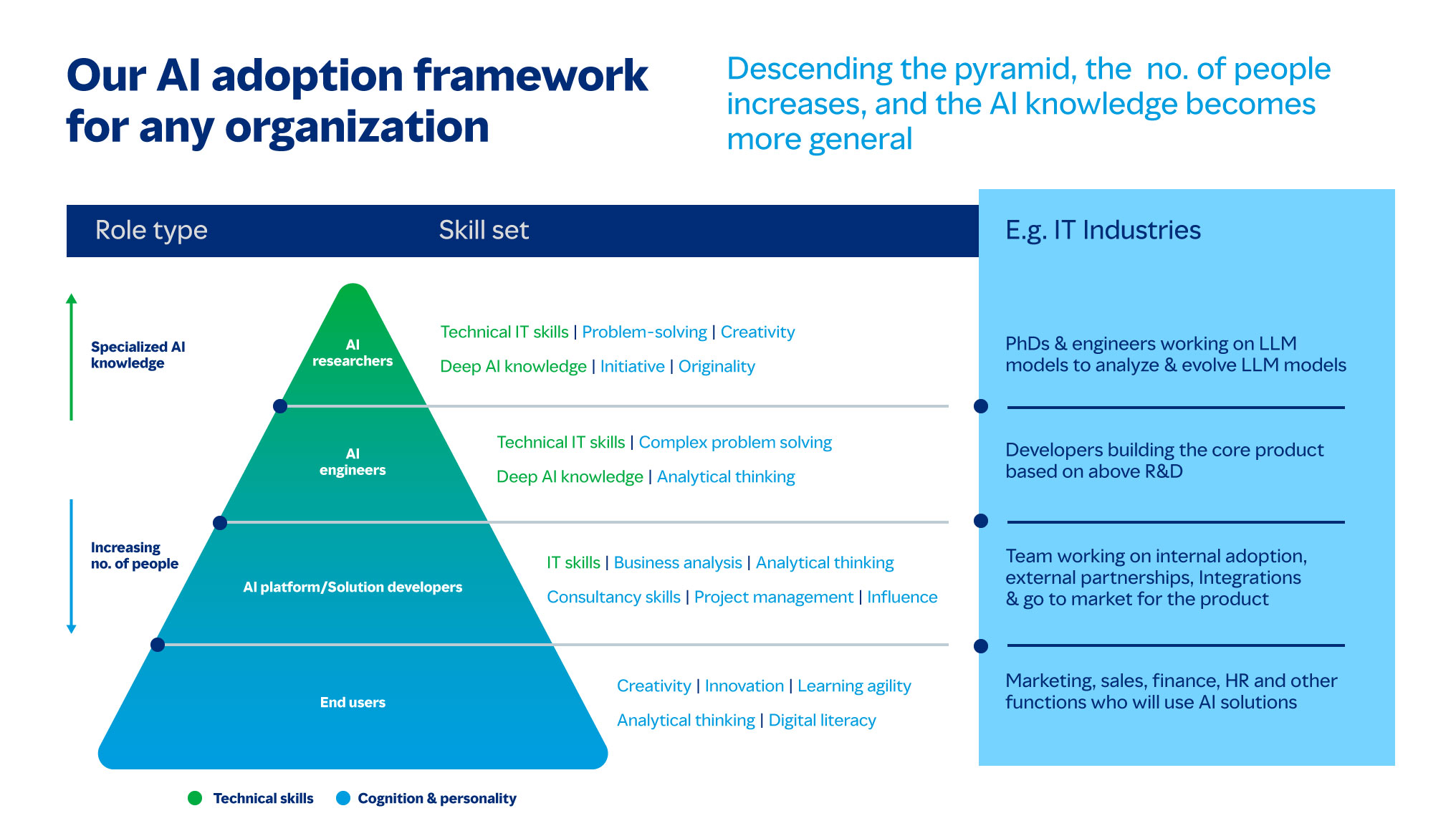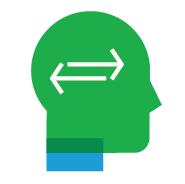This holistic approach ensures that the benefits and implications of AI are considered for a diverse range of stakeholders, facilitating effective adoption and utilization of AI technologies throughout an organization.

This AI adoption model can be visualized as a pyramid. At the top of the pyramid, we find the most talented and skilled AI experts. These experts innovate Large Language Models (LLMs) and lay the groundwork for the core software, enabling organizations to leverage AI technology effectively. Their expertise serves as the bedrock upon which the entire AI adoption journey is built.
These individuals typically have advanced qualifications, such as Ph.D. graduates or experienced AI developers employed by companies engaged in cutting-edge applications like ChatGPT or Google BARD. The number of people at the first two levels, including AI experts and related professionals, is relatively fewer compared to the larger number of users at the lower levels.
Moving down the pyramid, the subsequent levels encompass AI consultants and professionals who focus on various aspects such as technology adoption, integrations, business partnerships, and end-user engagement.
These individuals build upon the research and development work conducted by the experts at the top two levels and transform the technical advancements into practical solutions, developing robust platforms or applications that incorporate refined AI models. For instance, this may include developers who specialize in building applications that leverage AI technologies like ChatGPT to automate creative writing jobs.
End users at the pyramid base require a diverse set of competencies such as creativity, innovation, learning agility, analytical thinking and digital literacy. They interact with AI-powered applications and benefit from the insights and functionalities provided by technology.
Companies must proactively plan for this group to ensure a smooth transition and effective integration of AI-driven solutions into their work processes. It is essential for this group to be adaptable and apply AI tools in innovative ways to address real-world challenges. Reasoning, as well, helps users interpret AI outputs accurately and support data-driven decisions. Prompt engineering ensures they can operate AI platforms efficiently while collaborating with different team members to help implement and experiment with different AI-related solutions to tackle problems.

Building these competencies through targeted training like continuous learning initiatives, workshops, and certification programs tailored to these competencies will empower end users to use AI confidently and responsibly, driving organizational success in the evolving AI landscape. For developers, this includes technical skills such as content creation, prompt engineering, and evaluating AI output, while end users need training to enhance their digital literacy, creativity, and understanding of AI capabilities.









 Behavioral Competencies
Behavioral Competencies Cognitive Competencies
Cognitive Competencies Coding Competencies
Coding Competencies Domain Competencies
Domain Competencies

























Would you like to comment?